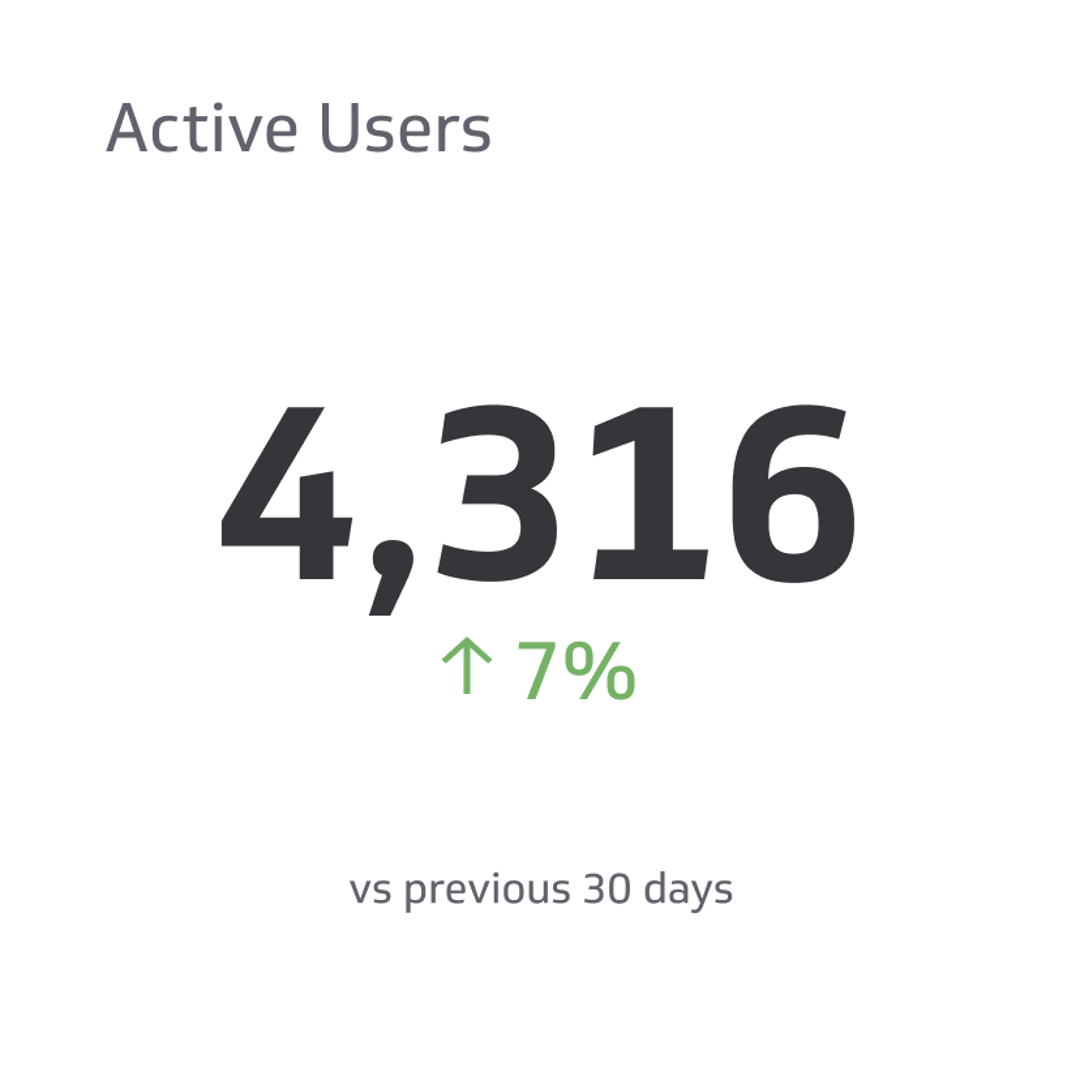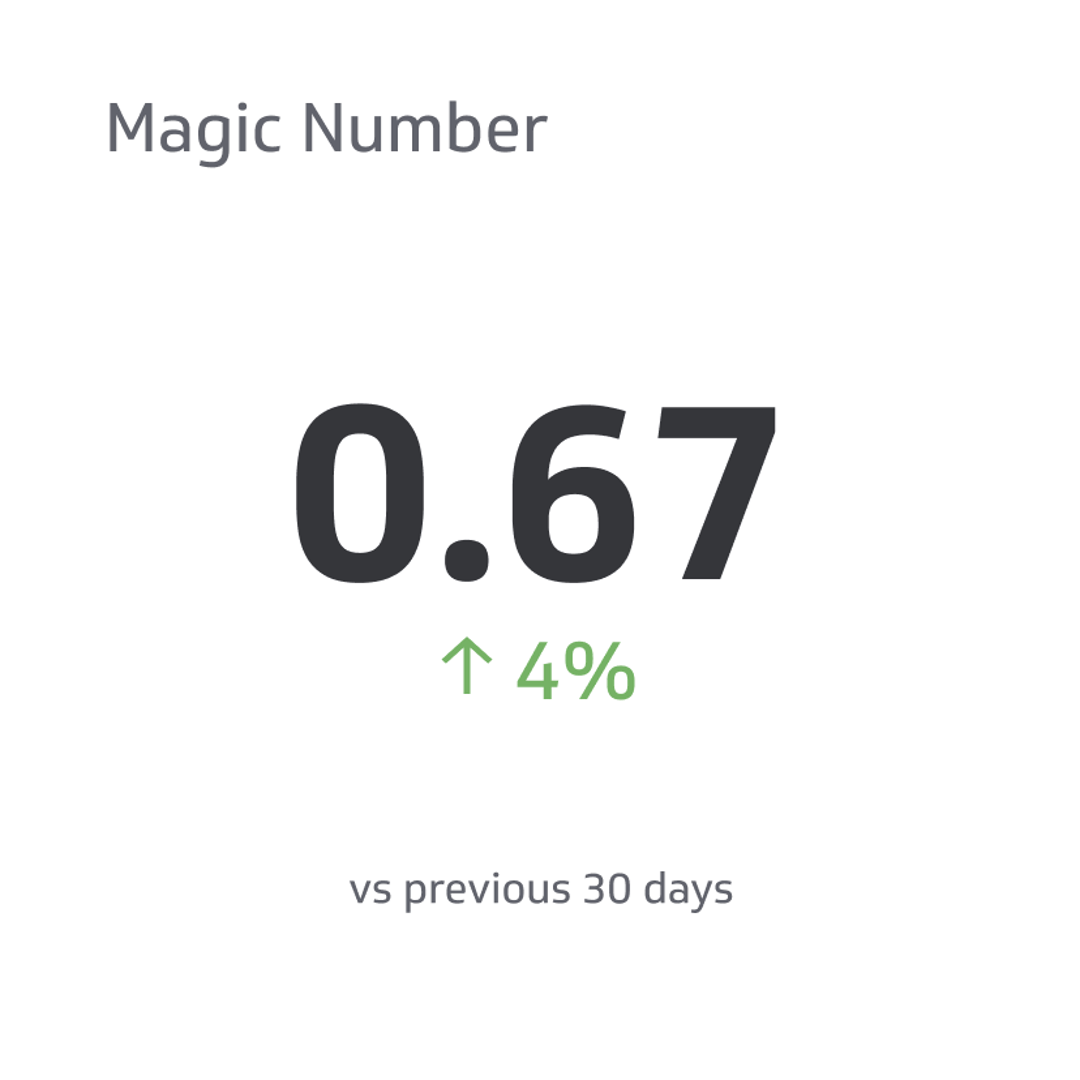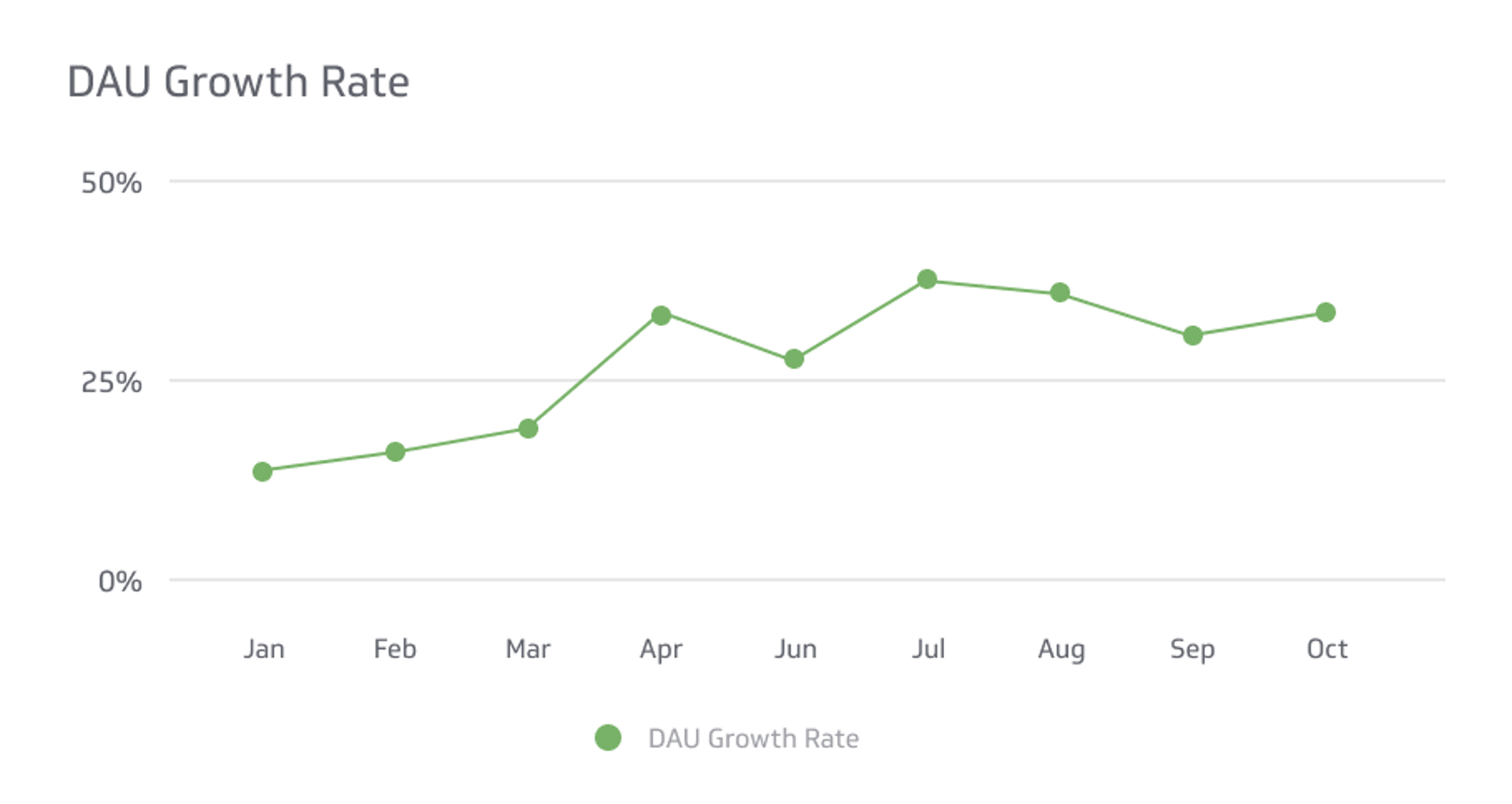Active User
An active user has registered for your software and has used it within a reasonable timeframe.
Track all your SaaS KPIs in one place
Sign up for free and start making decisions for your business with confidence.

Understanding the performance of an app or software is crucial, and a key metric that provides valuable insights is the number of active users. In this article, we'll delve into the concept of active users and explore why they are essential to consider.
By gaining a comprehensive understanding of active users, you can effectively evaluate and optimize the performance of your app or software, ensuring its success in today's competitive digital landscape. So let's get started!
What Is An Active User?
An active user has registered for your software and has used it within a reasonable timeframe. This timeframe is critical to measuring active users that companies often overlook. Many businesses focus solely on reporting "monthly active users," but this can be misleading in understanding how customers interact with the software.
To illustrate this point, let's consider tax software. While businesses may use it regularly, the average consumer only uses the software yearly to file taxes. However, they are still considered active users since most people only need to use the software once a year, even if they don't interact with it for the rest of the year. Therefore, it's essential to determine the appropriate timeframe for measuring active users to understand how customers use the software.
Common Time Frames
Tracking user engagement over different time frames is a crucial aspect of measuring the performance of any software service. Companies typically monitor daily, weekly, and monthly usage to gain insights into how their application performs over time.
Companies can derive valuable information by analyzing usage patterns at different levels of detail. For instance, monitoring daily users might reveal that the app is primarily used on weekends, while user engagement is low during weekdays. Such insights allow companies to anticipate peak usage periods and ensure their servers can handle the increased load.
Special Cases
It's common for software services to experience variations in user activity depending on the day and time of year. For instance, business software usage may significantly decline during holidays such as Christmas to New Year's week.
Attempting to boost user activity during such times is generally futile as it reflects real-world business cycles and is not necessarily an issue with the software. Therefore, it is crucial not to overreact to daily changes in user activity and instead focus on measuring active users over an extended period to understand typical usage patterns.
Various factors influence user behavior, so a long-term perspective is necessary for accurate insights. By doing so, companies can better understand their users' needs and adjust their services accordingly to meet their expectations.
The Value of Tracking Active Users
Monitoring active users provides numerous advantages for companies, encompassing several key areas.
Firstly, it serves as a valuable tool for assessing the effectiveness of marketing campaigns. By observing an increase in active users during a campaign, it becomes evident that the ads yield positive results.
Secondly, analyzing the average duration of user activity enables companies to estimate the lifetime value of their customers or identify strategies for improving sales. For instance, if the typical user remains subscribed for six months, offering them a compelling deal at the five-and-a-half-month mark could extend their subscription period.
Furthermore, active user metrics offer a straightforward and impactful way to present information to stakeholders, executives, and investors. A 20% year-over-year increase in active users indicates significant and robust growth, instilling confidence in the company's performance.
Defining An Active User
For businesses, it is crucial to establish criteria for defining an active user. A mere login without additional interaction is typically insufficient to qualify as an active user.
To illustrate, a social media platform may consider an active user as someone who creates a post reacts to someone else's post, or views a specific number of posts, regardless of their level of engagement.
The most effective way to define an active user is by considering the software's purpose and the user's behavior while using it. Companies may even determine that users only qualify as active users if they spend a specific amount of time with the software, regardless of their activity level.
Maintaining Active Users
A common problem that SaaS companies have is trying to push their active user numbers up by any means necessary. However, implementing addictive, short-term behavior loops can harm long-term retention and profits.
In other words, it’s not good to try and push active users up regardless of the cost. Instead, you should try to understand what value you can offer customers and what your software can do to make them want to engage naturally.
Splitting Users
It's important to note that for some software, it's best to segment users into different activity levels instead of trying to consolidate them into the same metrics.
For example, you have an app that helps people find deals at local restaurants. As you expand your user base, you may discover that 20% of your users are active daily. Further analysis reveals that most of these users are city-based corporate workers using your app to find places for lunch.
Another 10% of your users are active weekly. These users eat out regularly, but not every day. You may notice consistent patterns here, such as people who go out to eat after church on Sundays.
Finally, the remaining 70% of your users are active once or twice a month. These users don't eat out often, but they make up the majority of your user base, and many are located in different areas than the city workers.
In this case, counting daily and monthly users similarly doesn't make sense because they're fundamentally different groups. While you may see a lot of growth in monthly users, the numbers on any specific day wouldn't be much higher due to the spread of the user base, potentially disguising actual performance.
Getting More Active Users
There are many ways of getting more active users for your software. Here are some of the most effective options.
Marketing
Marketing is a tried and tested method to attract more users to your software. With consistent efforts, you can expect a certain percentage of new users to stick around and become consistent users. Thus, it's beneficial to continue marketing until you reach effective saturation.
However, your marketing strategy should align with the software you’re selling. For instance, it's not wise to approach social media influencers to promote enterprise-grade server management software because their audience may not be interested. Instead, it might work better to approach them if you have a new game or entertainment app to market.
Adding Features
In most cases, softwares offering a greater variety of uses or content will likely attract more active users. Users are more likely to engage with software that provides them with value, so the more functionalities or content a software offers, the more likely users will find it valuable and engaging.
Add Feature Discovery
Providing instructional features such as tooltips, modals, and other guidance pop-ups can enhance users' understanding of utilizing your software and optimizing its capabilities. Users willing to invest time learning how to use your software will likely remain active users, especially if your tutorial experience is seamless and user-friendly.
Include Gamification
Gamification is a technique of integrating game-like features into non-game software, such as various types of business software. Elements like leaderboards, objectives, levels, or badges can motivate users to use your software more frequently.
It's essential to ensure that any gamification elements match the tone of your software. However, these techniques are known to positively affect engagement, which can lead to more active users.
Collect Feedback
Incorporating in-app feedback is an excellent strategy for enhancing your software. No matter how much testing you conduct, you may overlook aspects regarding how typical users will interact with your software.
By collecting and acting on user feedback, you can continuously improve your software and improve it over time. As a result, you can anticipate an increase in active users.
Final Thoughts
To wrap up, active users are a crucial SaaS metric for software and app companies. Monitoring the number of users who consistently engage with your software and understanding the factors contributing to user attrition can significantly impact the reliability and success of your product over time.
By continuously evaluating and adapting your software based on active user insights, you can improve its performance, enhance user satisfaction, and build a stronger user base. Remember, active users are not isolated entities but rather individuals whose engagement is shaped by their unique experiences and needs.
Related Metrics & KPIs

.png)

